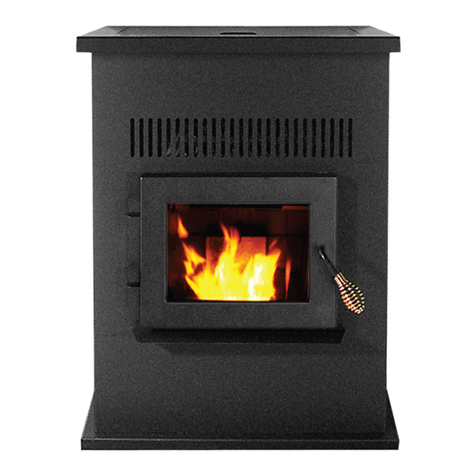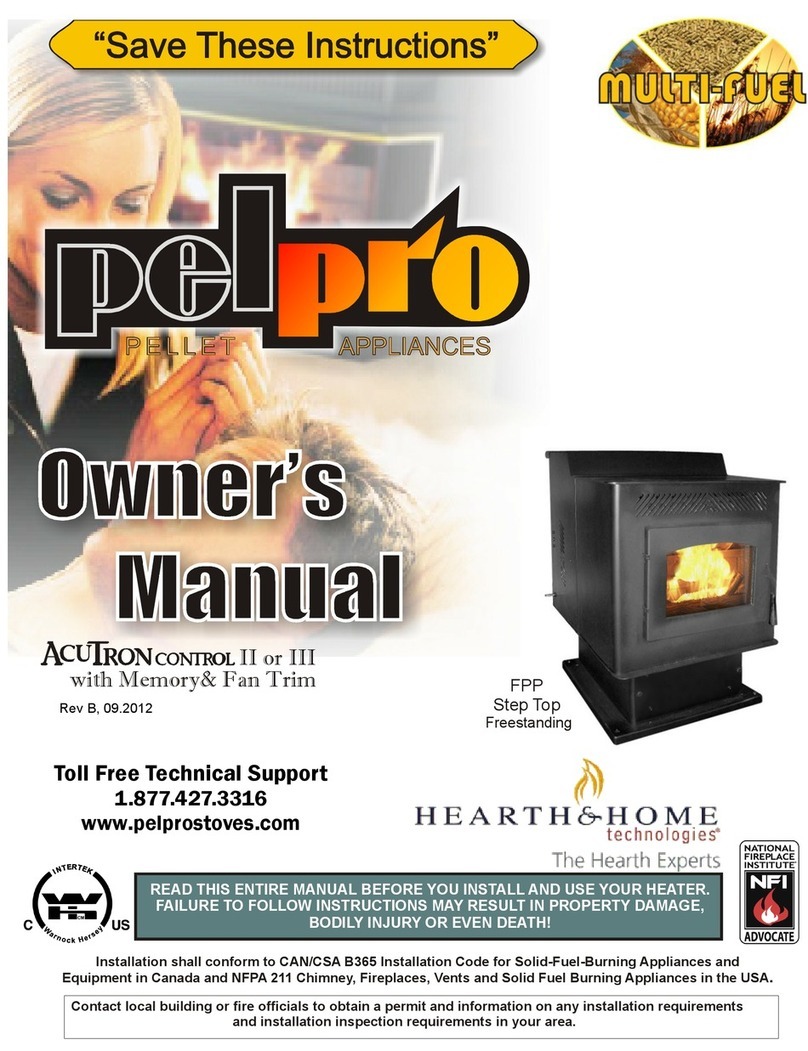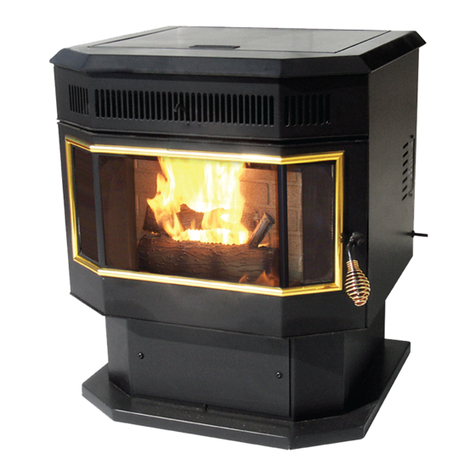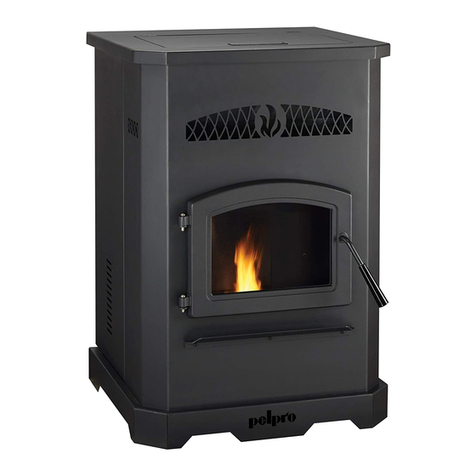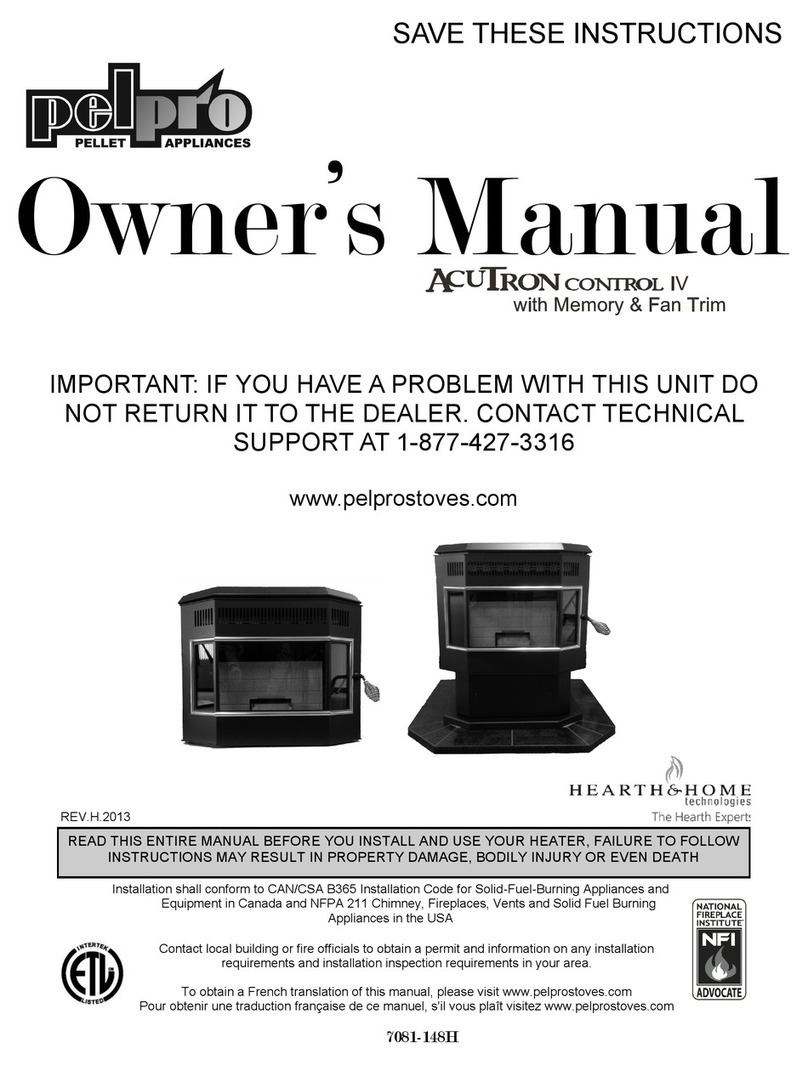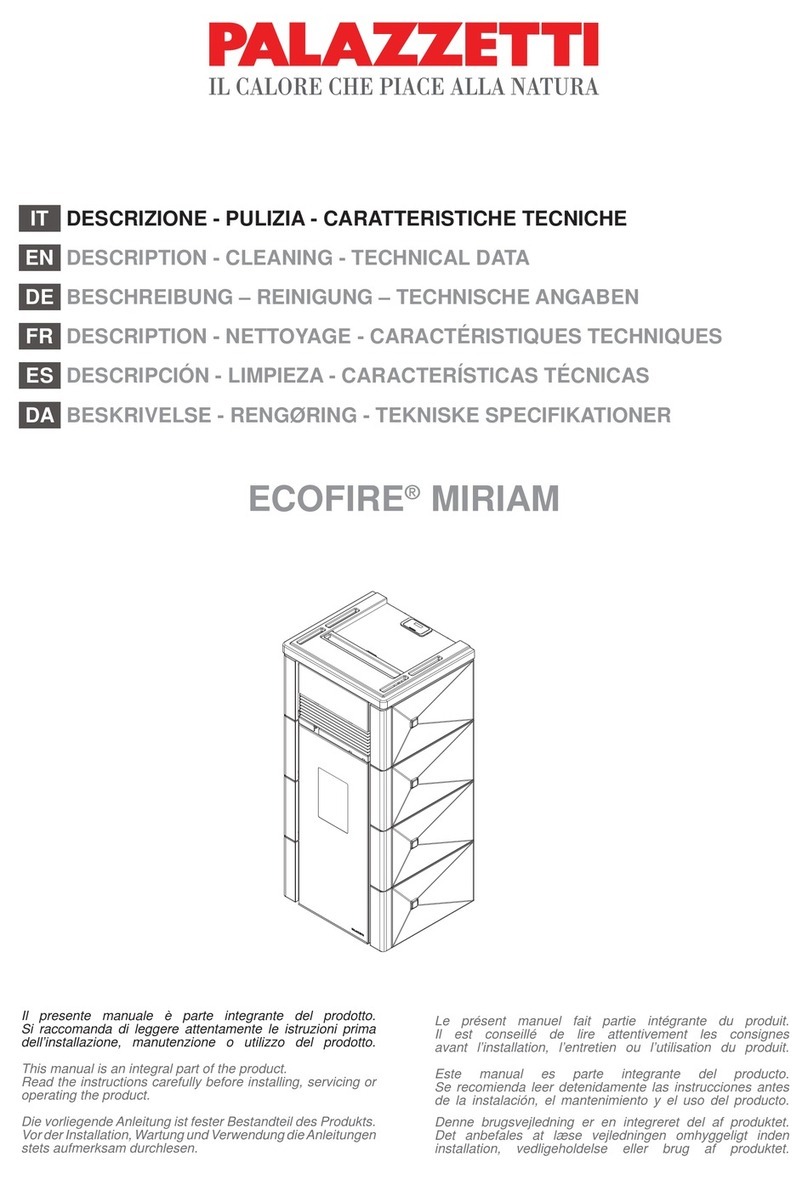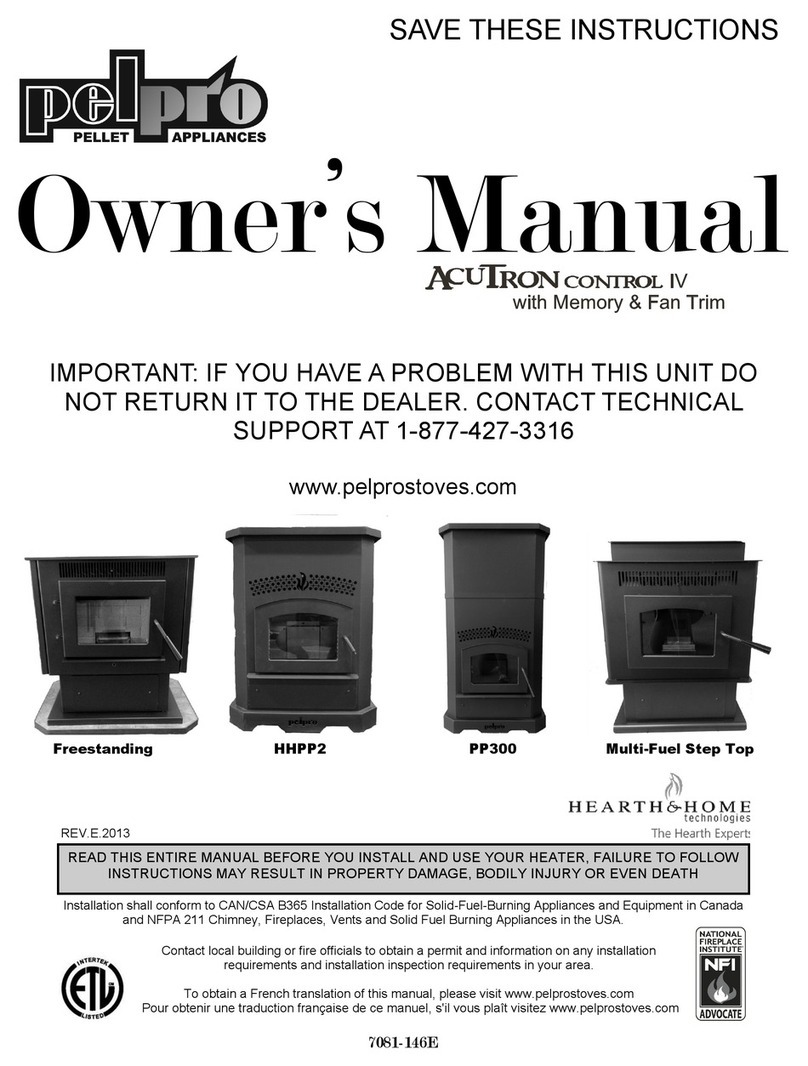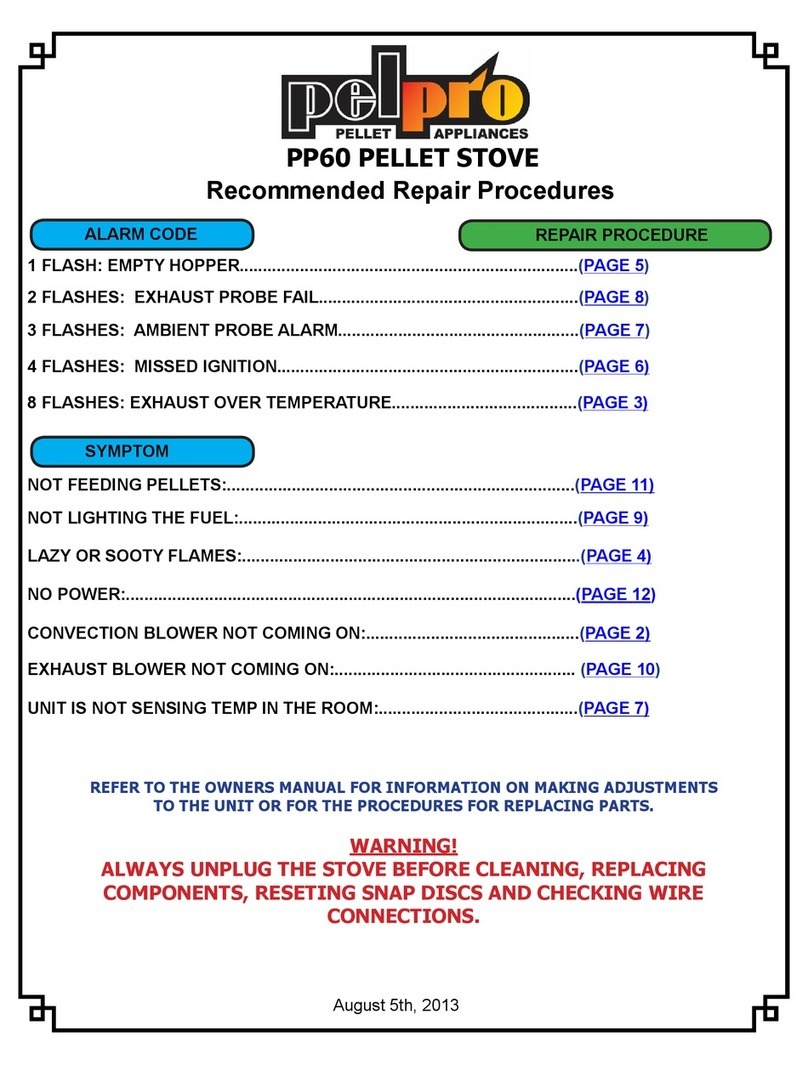
www.pelprostoves.com 7086-171D • July 10, 2014 3
TABLE OF CONTENTS
Safety Alert Key:
• DANGER! Indicates a hazardous situation which, if not avoided will result in death or serious injury.
• WARNING! Indicates a hazardous situation which, if not avoided could result in death or serious injury.
• CAUTION! Indicates a hazardous situation which, if not avoided, could result in minor or moderate injury.
• NOTICE: Indicates practices which may cause damage to the appliance or to property.
1 Listing and Code Approvals ............5
A. Appliance Certification......................................................5
B. Mobile Home Approved ....................................................5
C. Glass Specifications.........................................................5
D. Electrical Rating (On High)...............................................5
E. BTU & Efficiency Specifications........................................5
2 General Information..........................6
A. Fire Safety .........................................................................6
B. Non-Combustible Materials ...............................................6
C. Combustible Materials.......................................................6
D. Fuel Material and Fuel Storage........................................6
E. Before Your First Fire.......................................................6
3 General Operating Information.......7
A. User Dial Control ...............................................................7
B. Filling the Hopper...............................................................7
C. Priming the Feed Tube......................................................7
D. Firepot Purge.....................................................................8
E. Shutdown...........................................................................8
F. Starting Your First Fire........................................................8
G. Fire Characteristics ...........................................................8
H. Your Pellet Appliance - General Operating Parts...............9
I. LED Color Coding Chart and Explanation..........................10
J. Ignition Cycles...................................................................11
K. Running in Minimum or Maximum....................................11
L. Running in the Comfort Level Mode..................................11
M. Clear Space .....................................................................11
N. Trim Adjustment................................................................11
4 Maintaining & Servicing
the Appliance....................................12
A. Proper Shutdown Procedure .............................................12
B. Quick Reference Maintenance Chart................................12
C. General Maintenance........................................................12
D. High Ash Fuel Content Maintenance.................................16
E. Frequently Asked Questions.............................................17
5 Replacement Parts............................18
A. Convection Blower Replacement ......................................18
B. Exhaust Blower Replacement............................................18
C. Snap Disc Replacement ...................................................19
D. Igniter Replacement ..........................................................19
E. Baffle Removal & Replacement ........................................19
F. Glass Replacement............................................................20
G. Feed Motor Replacement .................................................20
H. Feed Spring Replacement ................................................20
I. Control Board Replacement................................................20
J. Fuse Replacement.............................................................20
6 Getting Started..................................21
A.
Design, Installation & Location Considerations.........................21
B. Draft...................................................................................21
C. Negative Pressure.............................................................21
D. Locating Your Appliance & Chimney .................................22
E. Inspect Appliance & Components......................................22
F. ToolsAnd Supplies Needed ...............................................22
7 Dimensions and Clearances............23
A. Appliance Dimensions ......................................................23
B. Clearances to Combustibles (UL and ULC).......................23
C. Hearth Pad Requirements (UL and ULC)..........................24
8 Vent Information................................25
A. Chimney and Exhaust Connection...................................25
B. Venting Termination Requirements...................................25
C. Pellet Venting Charts.........................................................26
9 Venting Systems...............................27
A. Vertical - Interior - Typical Installation................................27
B. Through The Wall & Vertical - External - Horizontal ..........27
C. Vertical into Existing Class AChimney..............................27
D. Masonry............................................................................28
E. Alternate Masonry.............................................................28
F. Through The Wall..............................................................29
10 Mobile Home....................................30
A. Mobile Home Installation ...................................................30
11 Appliance Set-Up.............................31
A. Removal From Pallet.........................................................31
B. Outside Air Kit Instructions ................................................31
C. Power up the Unit .............................................................31
D. Hopper Extension (Optional Accessory)............................31
12 Troubleshooting..............................32
13 Reference Materials........................35
A. Component Function .........................................................35
B. Wiring Diagram..................................................................35
C. Replacement Parts............................................................36
D. Service & Maintenance Log...............................................38
E. Warranty ............................................................................39
